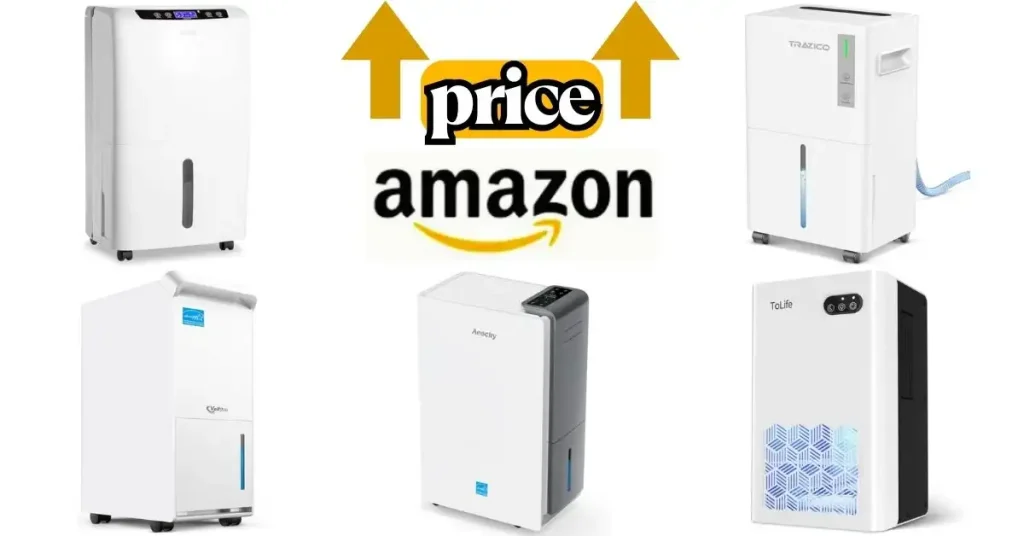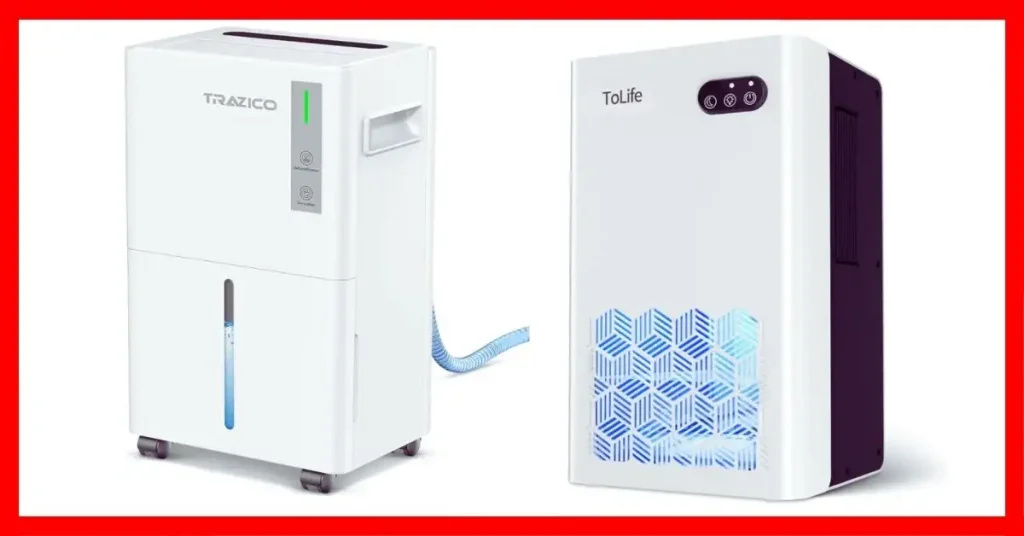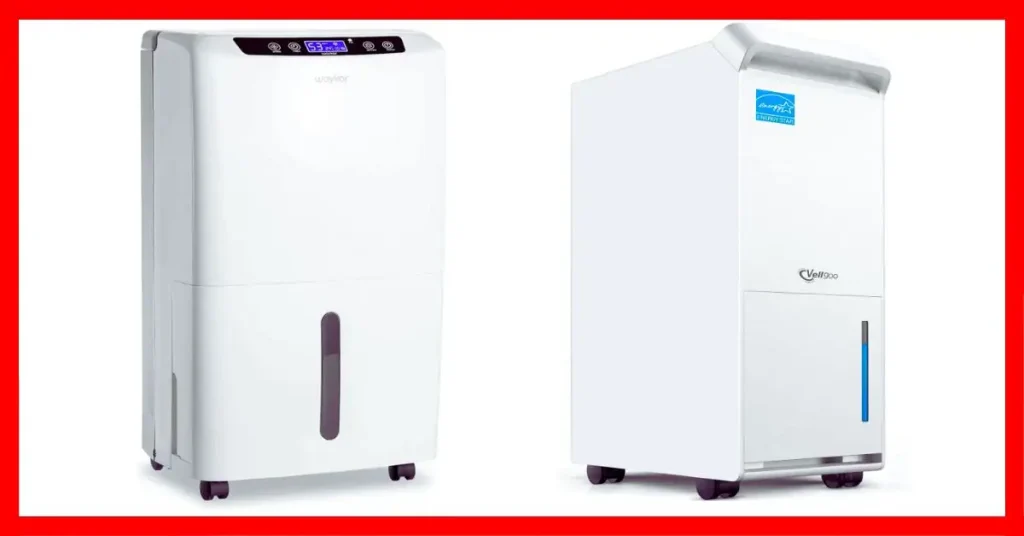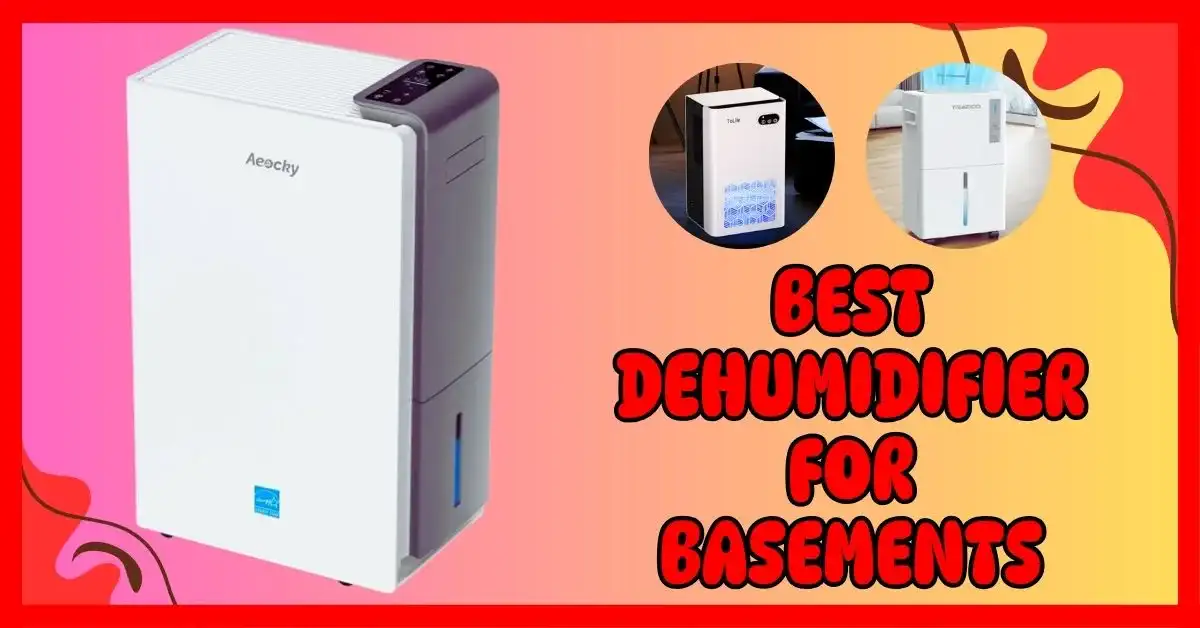A damp basement is frustrating. That’s why it helps to know what is a good size dehumidifier for a basement. I made a mistake with my first one. It was too small. The air stayed heavy. Mold kept coming back. Later, I tried a bigger unit. The difference was clear. In this guide, I will show you how to pick the right dehumidifier for any basement. I’ll also share tips on the best dehumidifiers for basements that really work.

Why Basement Size (and Moisture) Matters
Basements often feel damp. They sit underground, so walls and floors touch wet soil. Small windows and poor airflow make it worse. Even tiny leaks or condensation add up. So, a basement can feel wet, even if it’s not huge.
Size is important, but moisture matters more. My 1,000 sq. ft. basement always felt soggy after rain. The air was heavy, and walls stayed damp. A bigger basement with better airflow might feel drier. The key is matching the dehumidifier to both size and moisture.
Think of your basement like a sponge. Humidity is water. A small sponge fills fast. A big sponge holds more. Picking a dehumidifier based only on size is like guessing the sponge’s capacity. You might end up with a unit that can’t keep up. From my experience, counting the moisture first saves time, money, and frustration.
Dehumidifier Size Guide (Pints vs. Square Feet)
Dehumidifiers are rated by how many pints of water they remove in a day. More pints mean the unit can handle a bigger or wetter space. Energy Star suggests picking a size based on both your basement’s square footage and how damp it feels. A small basement with a little moisture does not need the same power as a large, wet one.
I learned this the hard way. My first 30-pint dehumidifier ran all day in my 1,000 sq. ft. basement. The air stayed heavy, and the walls stayed damp. Upgrading to a 50-pint unit with a drain hose changed everything. The air felt lighter, and I did not have to empty the bucket constantly.
Here is a simple chart to make it easy:
Dehumidifier Size Chart for Basements
| Basement Size (sq. ft.) | Moisture Level | Recommended Size |
| Up to 500 | Slightly Damp | 20–30 pint |
| 500–1,500 | Moderately Damp | 30–50 pint |
| 1,500–2,500 | Very Damp | 50–70 pint |
| 2,500–4,500+ | Wet/Leaky | 70–80 pint (or whole basement unit) |
If in doubt, go one size bigger. A larger unit dries faster and runs less often. Think of it like buying shoes—you want them snug but not too tight.
What Size Dehumidifier Do I Need for Different Spaces?
The size of your dehumidifier depends on the space and how damp it is. For a typical basement of 1,000–1,500 sq. ft., a 30–50 pint unit works well. It removes extra moisture without running constantly.
Bigger basements, like 2,000–4,500 sq. ft., need more power. A 50–80 pint dehumidifier is best. These units can handle more water and keep the air dry. My 2,000 sq. ft. basement struggled with a 50-pint model after heavy rain. Upgrading to an 80-pint unit with a drain hose made a big difference. I didn’t have to empty the bucket all the time, and the air finally felt fresh.
Small spaces need smaller units. A 12×12 room only needs a 20–25 pint or compact portable dehumidifier. This stops walls from sweating and keeps the air from smelling musty.
For a whole 2,000 sq. ft. house, go bigger. A 50–70 pint model with a continuous drain works best. It saves time and keeps your home comfortable without extra work. Choosing the right size from the start prevents wasted effort and money.
👉🏿👉🏻 Check Latest Price and Offer at Amazon 👈🏻👈🏿
👉🏿👉🏻 Check Latest Price and Offer at Amazon 👈🏻👈🏿
👉🏿👉🏻 Check Latest Price and Offer at Amazon 👈🏻👈🏿
👉🏿👉🏻 Check Latest Price and Offer at Amazon 👈🏻👈🏿
👉🏿👉🏻 Check Latest Price and Offer at Amazon 👈🏻👈🏿

Best Dehumidifiers for Basements (Real Picks)
Choosing the right dehumidifier can be tricky. I learned that testing real units helps a lot. Here are my top picks based on size, performance, and ease of use.
For a large basement (4,500 sq. ft.), try the AEOCKY 80 Pint or the Vellgoo 52 Pint. These remove a lot of moisture fast. The AEOCKY is great for very wet basements. The Vellgoo works well for slightly smaller or moderately damp spaces.
For a medium basement (2,000 sq. ft.), the Waykar 34 Pint is perfect. It dries the air well and is easy to move. I liked that it runs quietly and fits in corners.
For small spaces like closets, bathrooms, or RVs, the ToLife portable unit is ideal. It is light, easy to set up, and stops musty smells quickly.
All these models have handy features. Drain hoses, humidistats, and energy-saving modes make life easier. Picking the right size and type saves time and frustration. The right unit will make your basement feel fresh fast.

Must-Have Features in a Basement Dehumidifier
A basement dehumidifier should do more than just remove water. A drain hose is key. It stops you from emptying buckets all the time. I switched to one with a hose, and it saved me dozens of trips to the sink.
A humidistat helps too. You set it once, and the dehumidifier works on its own. It keeps your basement at the right humidity and stops mold from forming.
Pick Energy Star-rated units. They use less electricity and save money. Running a dehumidifier all day can add up, so energy savings matter.
Auto restart and defrost features are also handy. If the power goes out or the basement gets cold, the unit keeps working. These small features make life easier and keep your basement dry all year.

FAQs
What size dehumidifier do I need for an average basement?
For a typical basement around 1,000–1,500 sq. ft., a 30–50 pint dehumidifier usually does the trick. From my experience, anything smaller leaves the air feeling damp, especially after heavy rain. Picking a unit in this range keeps mold at bay and saves you from running the machine non-stop. Basically, go with the higher end if your basement tends to stay humid.
Is a 12L dehumidifier big enough for a basement?
Not usually. A 12L (about 25 pint) unit works well for very small, slightly damp rooms, but basements are a different beast. I tried a 12L in my old basement, and it barely scratched the surface—air still felt heavy, and I was constantly emptying the tank. For most basements, bigger is better.
How big of a dehumidifier do I need for a 2,000 sq. ft. house?
For a 2,000 sq. ft. space, aim for at least a 50–70 pint model. If you can get one with a continuous drain, even better—you won’t be schlepping water every day. I had a 2,000 sq. ft. basement and learned this the hard way; going with a smaller unit just meant extra work and more frustration.
What size dehumidifier do I need for a 12×12 room?
A small 20–25 pint or compact portable dehumidifier usually handles a 12×12 room nicely. I’ve used a tiny unit in a guest room, and it kept the air fresh without taking up much space. For small spaces, efficiency beats raw power.
Best dehumidifier for large basements?
For big basements—think 2,500–4,500 sq. ft. or more—you want a 70–80 pint Energy Star model with a drain hose. I’ve found these to be lifesavers in damp, humid areas; they run quietly, pull out a lot of water, and you don’t have to babysit them. If your basement feels like a mini swamp after storms, this is your safest bet.
Conclusion
Picking the right dehumidifier comes down to size and dampness. Small units often fail when basements stay wet. I learned this myself—my first unit barely worked, and I wasted time emptying it.
Going bigger made a huge difference. The air felt lighter. Mold stopped coming back. I didn’t have to empty the tank all the time. If your basement is humid, go bigger from the start.
Measure your space. Check the chart. Pick a model with a drain hose if you want to set it and forget it. A good dehumidifier should make your basement feel dry and comfortable, not like a damp storage room.
To Get More About Home and Kitchen Product You Can Visit Our Site. If You Found our Posts Helpful Leave a Comment Below

